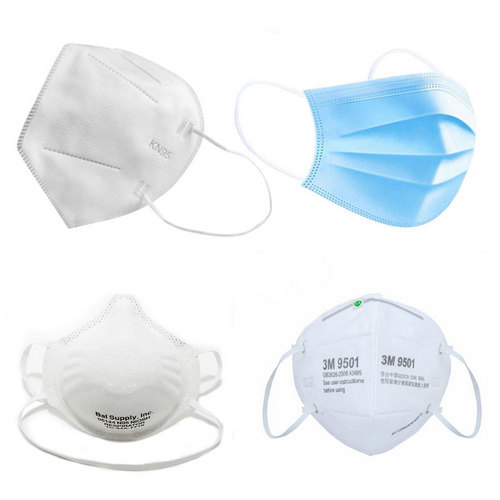
NewsInformation Center
What is the filtration principle of a medical mask?
2023/02/09
Medical protective masks are designed to block infectious microorganisms. Bacteria, viruses etc. do not exist independently in the air, they need to be attached to particles in order to cross-contaminate between hosts, so the medical protective masks block particles.
The filtering mechanism of the mask
Due to its complex structure and random three-dimensional distribution of fibres, ultra-fine meltblown filter media contains a large number of micro-pore voids in the material, and particles pass through various types of curved channels or paths around the fibres, greatly increasing the probability that particles floating in the fluid will collide and retain them.

From the analysis of the filtration principle of ultra-fine meltblown filter media filtration of particulate matter there are five main mechanisms: Brownian motion, interception, inertial impact, electrostatic attraction, sedimentation, which plays a major role in the filtration process of medical protective masks: interception, inertial impact and electrostatic attraction deposition. In order to ensure the filtration performance of medical masks, it is very important for the filter media to do electret treatment. No matter how fine the ordinary meltblown filter media is, if it is not electret treated, its filtration efficiency can only reach 85% under the condition of ensuring breathing resistance, while medical protective masks require filtration efficiency of >195% (i.e. N95 masks), so the international requirement is that the meltblown filter media in N95 medical protective masks must be electret treated.
After the electret treatment, the filter media becomes electrically charged. When charged particles in the air stream, especially sub-micron particles, pass through the gaps between the fibres, they are blocked or trapped by the electric field force. As the electric field force is a long-range force, the geometry of the pores of the filter media can be larger than that of ordinary fibres or porous materials at the same filtration efficiency, making the differential pressure of this filter media only one twentieth to one fortieth of that of conventional filter media, significantly reducing the flow resistance and therefore enabling the breathing resistance of the mask to be significantly reduced; in addition bacteria and viruses have a natural electret state (negatively charged) and are usually attached to the dust. When they pass through the pores of the electret filter media, the strong electrostatic field and micro-current generated by the electret will stimulate the bacteria to mutate their proteins, damage the cytoplasm and cell membrane of the bacteria, destroy the surface structure of the bacteria and lead to the death of the bacteria. At the same time, the strong electric field formed by the electret also has a significant function in inhibiting the reproduction of various types of bacteria.
Therefore, the electret modification of polypropylene non-woven materials can provide low flow resistance, high efficiency, dust removal and sterilisation, improving filtration performance and reducing costs at the same time.
For self-absorbing filter masks, the filtration efficiency is directly proportional to the breathing resistance. The finer the fibre, the larger the specific surface area of the filter media, the better the filtration effect, but the breathing resistance will also increase. In addition to this, the constant deposition of particles on the surface of the mask during use will also cause an increase in breathing resistance, making it difficult to breathe. Therefore, it is important to consider the breathing resistance of the mask while ensuring filtration efficiency. The total inspiratory resistance of a qualified medical mask should be no greater than 350 Pa and the total expiratory resistance no greater than 250 Pa for each sample.
Previous: What's the principle of the air permeability tester?
N e x t : Analysis of the evaluation of textile wear performance by Taber abrasion tester



